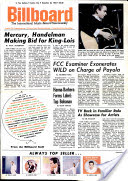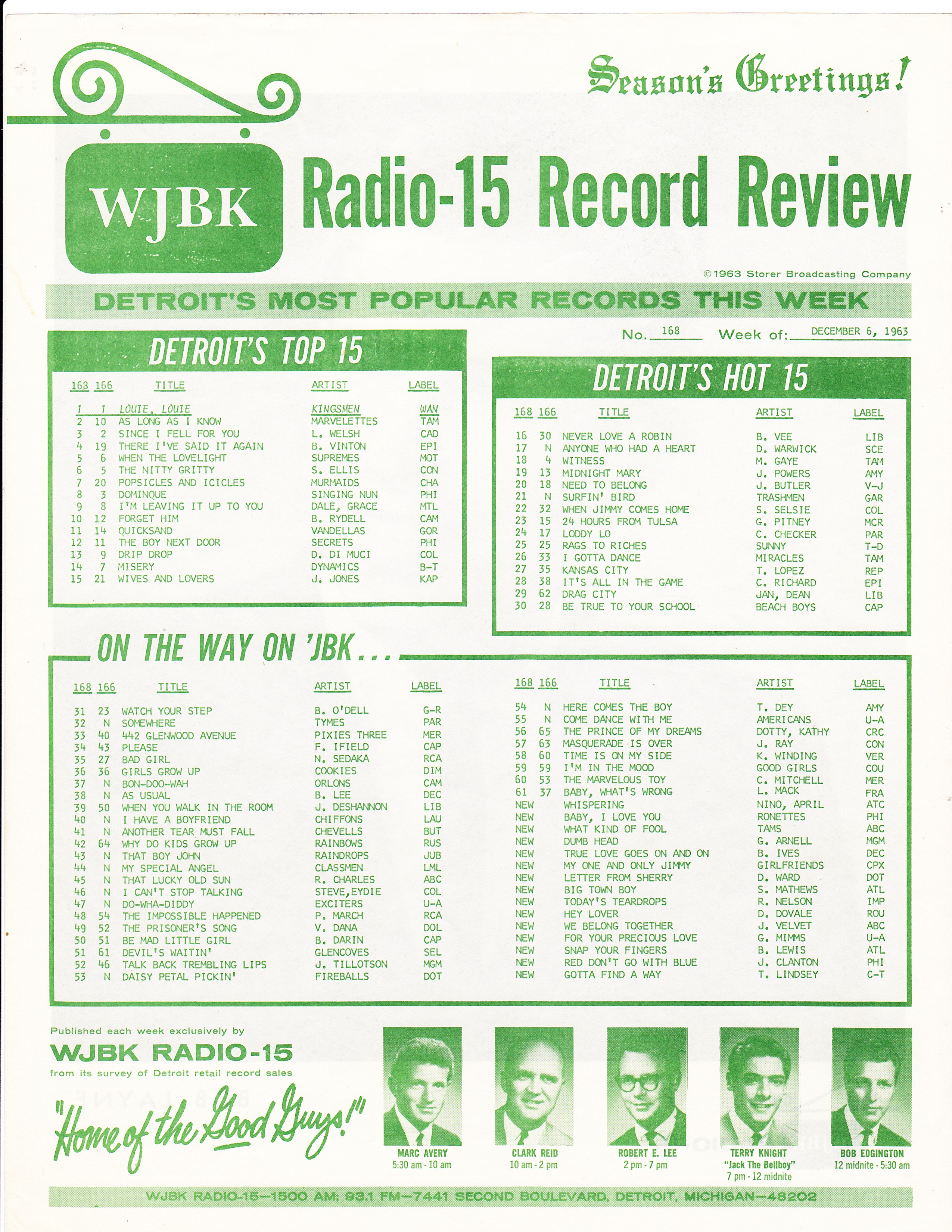 HAVE YOURSELF A MERRY LITTLE CHRISTMAS * The Hollyridge Strings * December 19 (No. 07)
HAVE YOURSELF A MERRY LITTLE CHRISTMAS * The Hollyridge Strings * December 19 (No. 07)
![]()
 From the MCRFB NEWS archive: 1964
From the MCRFB NEWS archive: 1964
The Bill Gavin Newsletter (December 1964)
From the Desk of Bill Gavin Billboard Contributing Editor
I N P A S T C O L U M N S I’ve referred occasionally to the tight playlist. As an observer of the radio scene, I’ve called attention to the prevailing practice among pop music radio stations of curtailing the number of records available for airplay. Every time I mention such a thing there is a certain backlash of disapproval, mainly from people in the record business. it seems to be a painful subject to them, and they’d prefer I didn’t mention it.
Unfortunately, the impression has been in created in some circles that I am an advocate of the tight playlist. Such is not the case. Facts are one thing, opinions are another. the fact is the tight playlist is being followed by a substantial number of pop format stations, many of which had made comfortable gains ratings and revenues. My opinion is that most of these gains are only an indirect or accidental result of the tight playlist.
 A S H O R T E N E D P L A Y L I S T does not by itself automatically produce beneficial results, as not a few managers who have tried can testify. It simply guarantees that a record on the list is played more often. The tight list stage that we are passing through these days is just one more experimental step in the constant search for more effective programming.
A S H O R T E N E D P L A Y L I S T does not by itself automatically produce beneficial results, as not a few managers who have tried can testify. It simply guarantees that a record on the list is played more often. The tight list stage that we are passing through these days is just one more experimental step in the constant search for more effective programming.
I N T H E E A R L Y D A Y S of format radio, considerable importance was attached to the No. 1 record on the survey. The theory was that since this was the best selling record in town, it should be played more often. Some stations played it once an hour and even used elaborate production fanfare and jingles to announce that it was about to be played. In retrospect, it is easy to understand why this didn’t work very well. By the time it had reached it’s No. 1 eminence, following six or eight weeks of steady play, the record’s appeal had usually worn thin with a large share of the audience. With some listeners it has already become such an annoyance through countless repetitions that it turned out to be a tuneout factor. The next step was the requirement that at least three or four records out of the top 10 be played every hour. To the extent that this system brought increased exposure to a few of the fast rising newcomers, this was refreshing improvement. To the extent that it belabored the older hits that had past their peak, it compounded evils of boredom inherent in the hourly repetition of the No. 1 chart item.
Various new experiments in balance and frequency were made by individual stations. Some stations increased their surveys from 40 to 50 or 60 sides. Others increased the frequency with which picks might be played. Still others tried an increased emphasis on the top 40, drastically reducing the number of picks that could be played in any given hour or day. Out of all these experimental efforts there emerged no observable pattern of success. Some stations still did well, others failed, no matter what they tried. Looking back now, we can see that a few stations were fortunate in having disk jockeys who seemed to know which records their listeners wanted to hear, and so programmed them more often, regardless of chart position.

U N F O R T U N A T E L Y D I S C J O C K E Y S with this kind of awareness were (and are) extremely rare. Most deejays, when left to their own devices of 80 to 100 records, sought to relive the tedium of their jobs by selecting the greatest possible variety of available music. Such a tendency ignored the axioms of programming: there are a certain few records that most listeners want to hear considerably more often than any others, regardless what numbers they carry on the charts.
There is nothing about a short playlist that a skilled programmer can accomplish just as effectively — with a long one. The short list of some 30 hits plus 10 to 15 picks obviously includes all the top listener favorites, and its very shortness guarantees that each of them will be played every three hours, if not more often. As a result, it doesn’t make too much difference whether a disk jockey has his radar working or not. He doesn’t have to know which records are top listener favorites; he has to play the entire list on his show every day, and sometimes to repeat a good deal of it in a single shift.
The fact that the older hits are also played with approximately equal frequency apparently is less of a listener deterrent that it was in the days of No. 1 or top 10 overemphasis. Listeners who know that they will hear their favorites in any given three-hour period are seemingly willing to endure the old standards in anticipation of assured listener satisfaction. Of course, a shorter survey has the additional advantage of omitting the tiredness of the old hits that might otherwise increase the boredom hazard.
T H E R E A R E O B V I O U S disadvantages to the tight list, not the least of which is its rigidity being unadaptable to the changing audience structure at different times a day. Skilled programmers with a reasonable adequate playlist, are able to balance their shows in relation to the available audience. The tight list practically assures the same records at all times of day, every day of the week.
Such a policy assumes that these few records are the ones that most of the people want to hear at any time of the day, morning, noon or night. It works well in many cities, primarily because there is no better alternative available at the pop level. It will cease to work, in my opinion, against any enlightened competition that can make an effective programming adjustment to the changing characteristics and components of the radio audience throughout the broadcast day.
I P R E F E R T O regard the tight playlist craze as a temporary and short-lived phenomenon, vulnerable to a more intelligent policy that emphasizes greater awareness of audience structure and taste. The recipes for the early morning, midday and evening musical diets will contain most of the same essential hit ingredients. But the seasoning, as well as the service, will be somewhat different. END
___
(Information and news source: Billboard; December 26, 1964)

![]()
 “DETROIT TOP 15” * Shirley Ellis * WJBK (No. 06) December 6, 1963
“DETROIT TOP 15” * Shirley Ellis * WJBK (No. 06) December 6, 1963A MCRFB VIEWING TIP: To fully appreciate this WJBK Radio 1500 Record Review December 6, 1963 chart feature — to enlarge this image FULL SCREEN — click on the image 2x and open to second window for detailed view. Click image anytime to return to NORMAL image size.
(Click your server’s back button to return to MCRFB home page).
![]()